There’s more to discover than most people realize when it comes to amethyst in Illinois. The state holds quiet pockets where quartz has taken on a rich violet hue, waiting in soil and stone for someone patient enough to notice.
Finding it is less about luck and more about knowing how to read the land. The signs can be subtle, hidden in the shapes and colors of places most people overlook.
Once you understand where to focus your time, the results can be rewarding. A good day’s search might end with amethyst pieces that feel like they’ve been waiting just for you.
What is Illinois Amethyst?

Known for its distinctive purple color, Amethyst belongs to the quartz family. It owes its violet hue to trace amounts of iron and other impurities in its crystal lattice. The intensity of the purple color can vary— ranging from pale lavender to deep violet, with deeper shades generally being more highly valued.
Amethyst has been cherished throughout history for its beauty and symbolism. Its name is derived from the Greek word “Amethystos,” which means “not drunken.” Ancient Greeks and Romans believed that wearing or drinking from vessels made of it could protect against intoxication and promote sobriety.
Deposits of this stunning gem can be found in various parts of the world, including Illinois. However, there are only very few locations in our state where you can find them, so we’ll share with you where this location is along with other Amethyst-bearing spots in our bordering states.
The Different Types Of Amethyst And What They Look Like
Different environments contribute to the diverse appearances and types of this beautiful mineral.
The variety seen in amethyst is due to trace elements and impurities within the crystal structure. Elements like iron and manganese can alter the hue, leading to the beautiful spectrum of purples and other colors found in these crystals.
Brandberg Amethyst
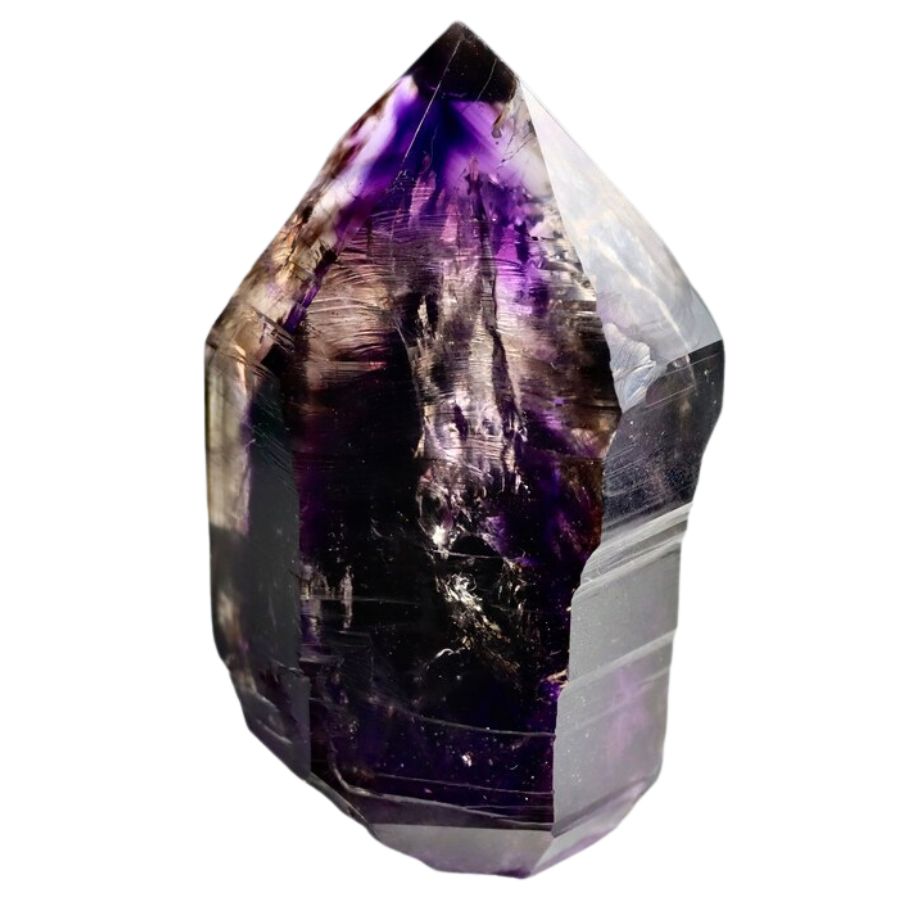
Brandberg amethyst is a captivating variety of quartz, renowned for its unique blend of elements like silicon dioxide, iron, and trace amounts of other minerals.
These components come together to form a crystal that not only holds geological significance but also showcases a striking array of hues and features.
The appearance of Brandberg amethyst is truly remarkable, characterized by its color range from deep purples to vibrant lilacs.
The varying shades are a result of the iron content within the crystal structure, which can fluctuate, leading to diverse color intensities and patterns in each specimen.
Brandberg amethyst stands out for its inclusion patterns and the presence of phantom crystals within its structure.
These internal “ghosts” are formed by layers of other minerals, offering a glimpse into the crystal’s growth history and adding to its allure for those fascinated by the wonders of the natural world.
Ametrine
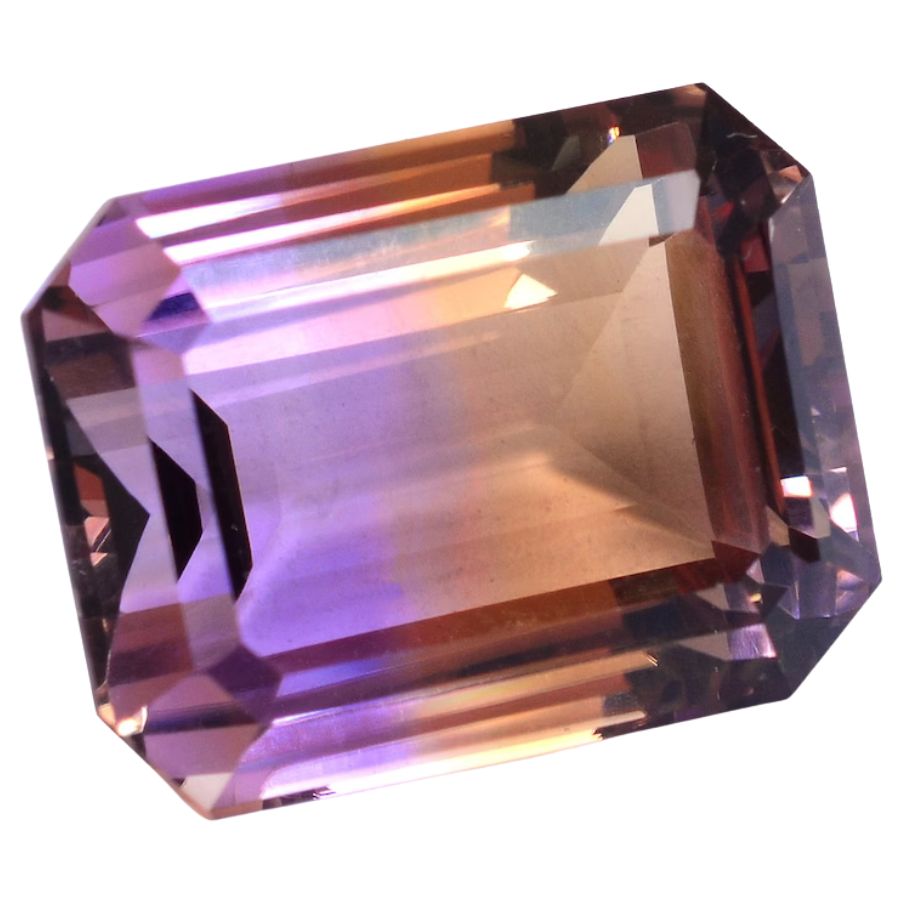
Ametrine is an intriguing mineral that captures the imagination of those interested in rocks and minerals. This unique gem is a combination of two quartz varieties: amethyst and citrine.
The beauty of ametrine lies in its striking coloration, which ranges from a blend of vibrant purple and golden yellow.
This color variation is a result of differing oxidation states of iron within the crystal, influenced by temperature and radiation exposure during formation.
Ametrine is notable for its distinct zoning of colors, where purple and yellow hues can be clearly seen in the same crystal. This feature, combined with its unique composition, sets ametrine apart from different kinds of amethyst.
Chevron Amethyst
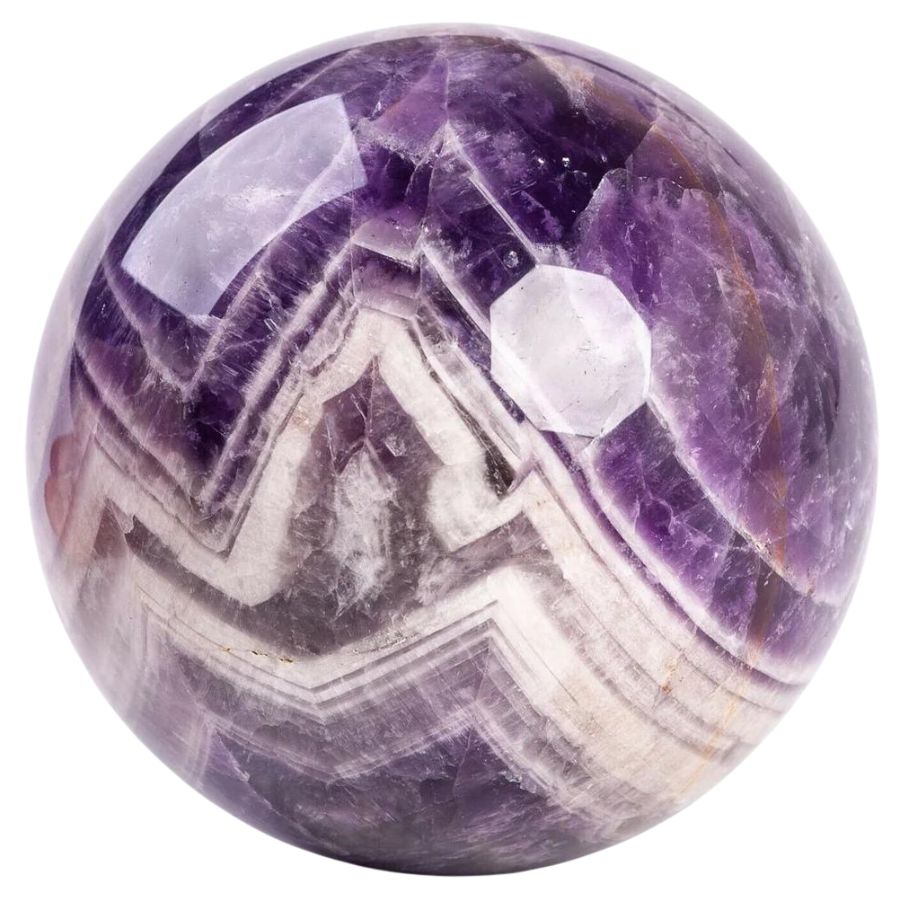
Chevron amethyst is a captivating type of amethyst known for its distinctive pattern. It’s easily recognized by its unique V-shaped or chevron patterns, which are a combination of deep purple and white or clear quartz layers.
These patterns and color variations are due to differences in iron content and other impurities in the layers, resulting in the striking contrast seen in chevron amethyst.
Chevron amethyst is not only beautiful but also a subject of interest for its formation process. The alternating layers of colors provide a visual record of the crystal’s growth history, making it a fascinating example for geological study.
Auralite
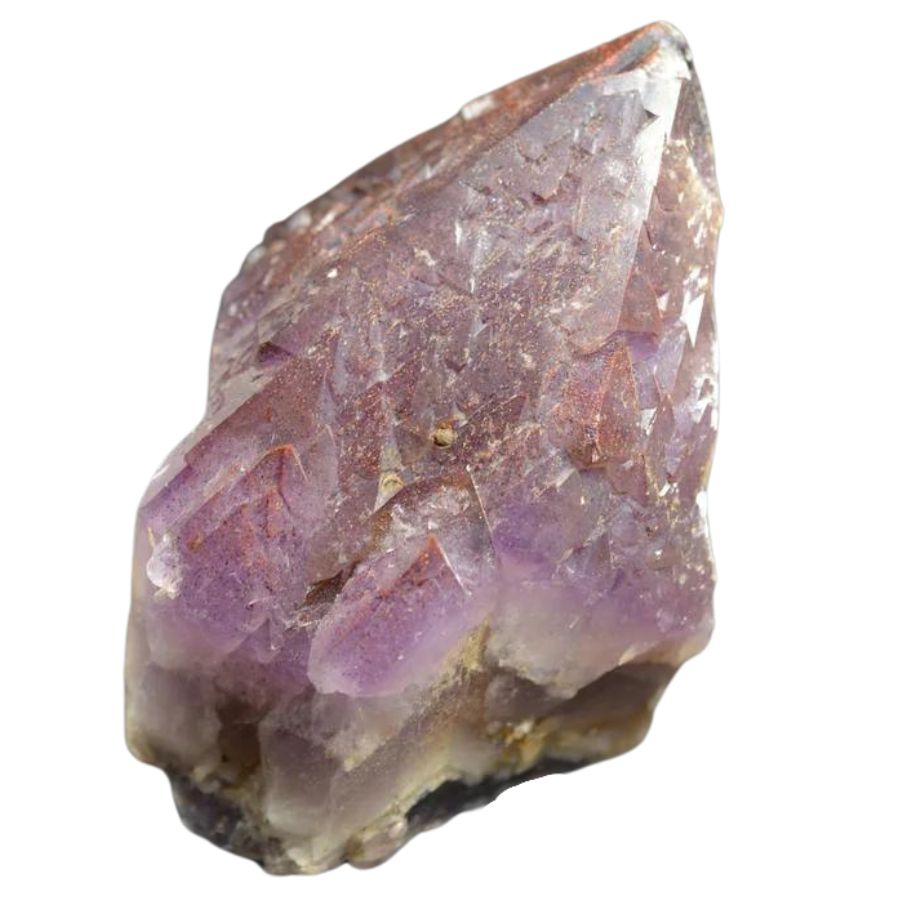
Auralite is an intriguing type of mineral that’s a combination of amethyst and several other trace minerals. Its composition includes silicon dioxide from amethyst, along with a mixture of elements like iron, copper, and titanium.
This mineral’s appearance is quite distinct, often showing a deep purple hue similar to what amethyst looks like, but with additional layers or inclusions of other colors.
These variations in color are due to the various trace minerals present in auralite, each contributing to its unique and colorful display.
A standout feature of auralite is the presence of multiple minerals within a single specimen, sometimes including up to 23 different types.
This mix not only gives auralite its diverse color range but also makes it a fascinating subject for those studying minerals and their properties.
Prasiolite
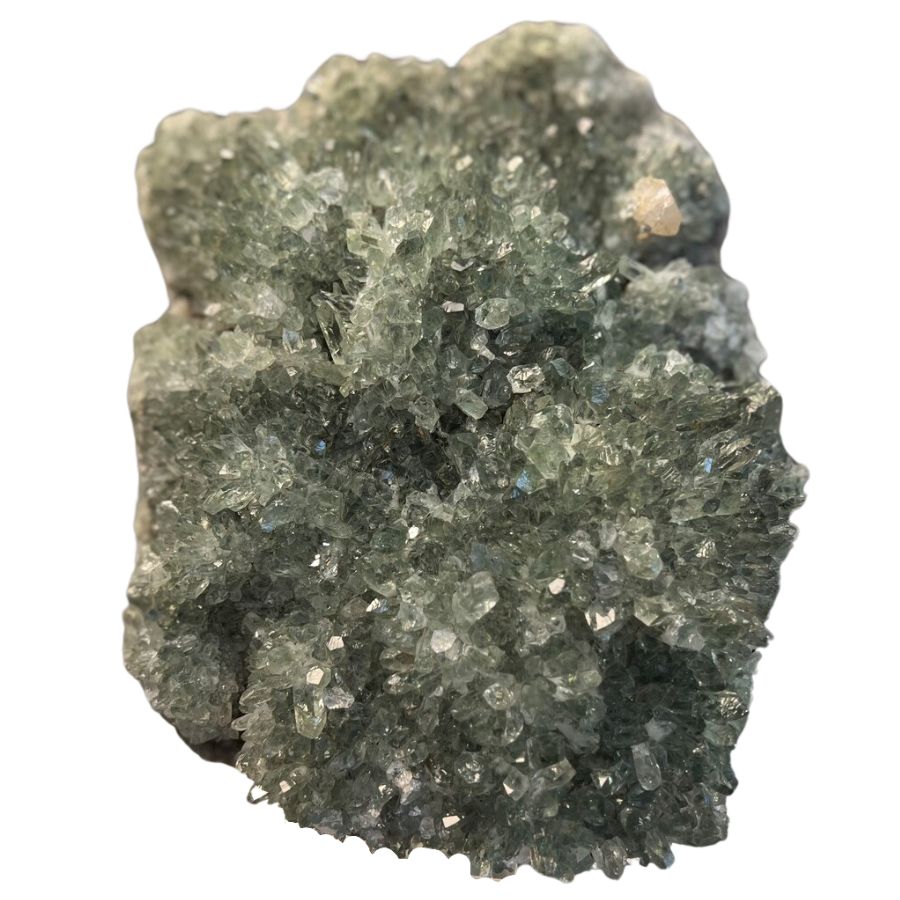
Prasiolite is an interesting variety of quartz. It often contains traces of iron, which play a key role in giving prasiolite its unique color.
This mineral is known for its beautiful green color, which can range from a light, almost transparent green to a deeper, more olive shade.
The green color of prasiolite is usually the result of heat treatment, either occurring naturally in the earth or artificially, transforming certain types of amethyst or yellowish quartz into prasiolite.
Naturally-occurring prasiolite is rare, as most available prasiolite is created through artificial means.
Cacoxenite amethyst

Cacoxenite is an intriguing mineral primarily composed of iron, aluminum, and phosphate, along with other elements like oxygen and hydrogen. This combination of elements gives cacoxenite its unique chemical makeup and properties.
Cacoxenite typically exhibits a striking golden-yellow to brownish-yellow color. This coloration is mainly due to the presence of iron in its structure, which imparts the rich hues that characterize this mineral.
A notable feature of cacoxenite is that it often forms as an inclusion within other minerals, such as amethyst, creating a beautiful contrast.
These inclusions of cacoxenite can appear as radiating or feathery formations, adding an intricate and fascinating aspect to the host mineral.
Phantom Amethyst
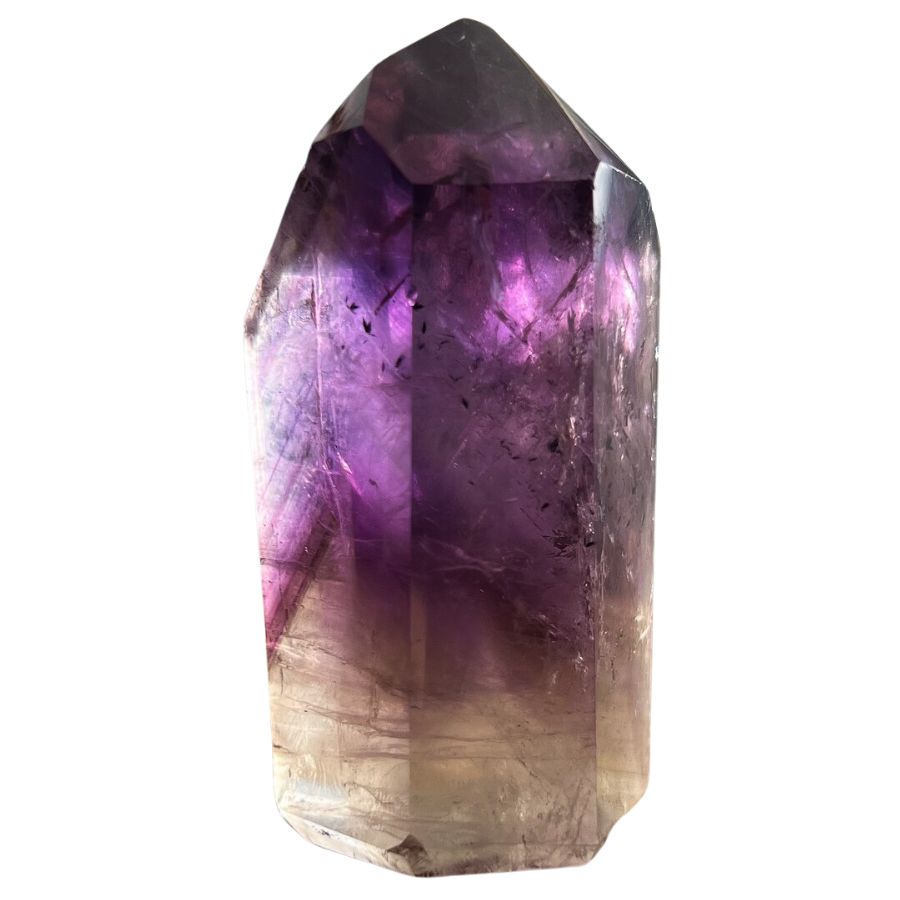
Phantom amethyst is a fascinating variety of amethyst. It stands out due to the presence of “phantoms” – ghost-like inclusions within its structure, which give it a distinct and layered look.
In phantom amethyst, one can observe a range of colors from deep purples to lighter hues, often appearing in layers or as phantom shapes within the crystal.
These color variations are typically due to trace amounts of iron and other minerals that get trapped during the crystal’s growth, influencing its final color.
Phantom amethyst provides a visual record of the crystal’s growth history. The crystal outlines and layers within the stone are formed by pauses in the crystal’s growth, offering a glimpse into geological processes over time.
Pink Amethyst
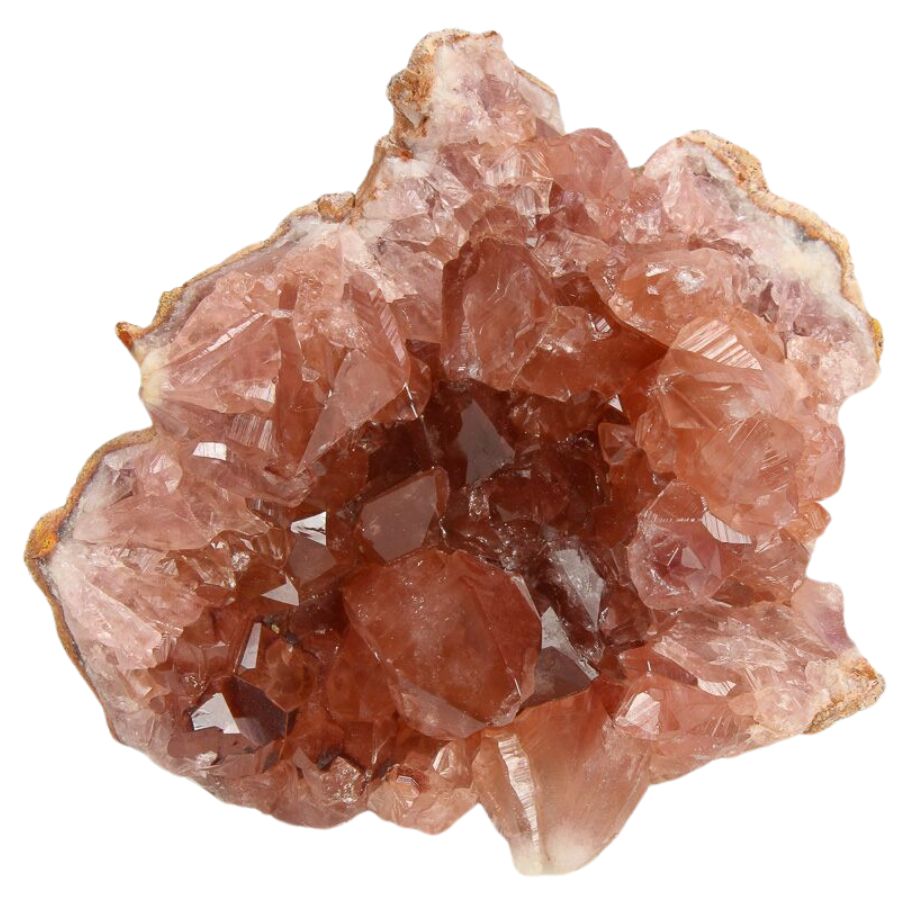
Pink amethyst is a unique and relatively rare variety of the common mineral amethyst. The presence of trace elements, particularly iron, contributes to its distinct pink hue.
The appearance of pink amethyst ranges from a delicate, light pink to a deeper, more vivid pink.
This variation in color is largely due to the concentration and distribution of iron within the crystal, which affects how light interacts with the mineral.
Pink amethyst is its often found in geodes or clusters, where multiple crystals grow together in a captivating display.
Amethyst Geodes
Amethyst geodes are fascinating natural formations, with traces of iron giving them their famous purple color. These geodes form in volcanic rocks and are essentially hollow, lined with amethyst crystals.
A key feature of amethyst geodes is their crystal-lined cavity, which creates a stunning natural display. When you look inside an amethyst geode, you’ll see a range of purple hues, from light lavender to deep violet.
The color variation is due to the amount of iron and the specific conditions under which the crystals formed, such as temperature and the presence of other trace elements.
Geodes can vary greatly in size, from small enough to fit in your hand to large enough to stand in, and each one is unique in its crystal formation and color pattern.
Cactus Amethyst
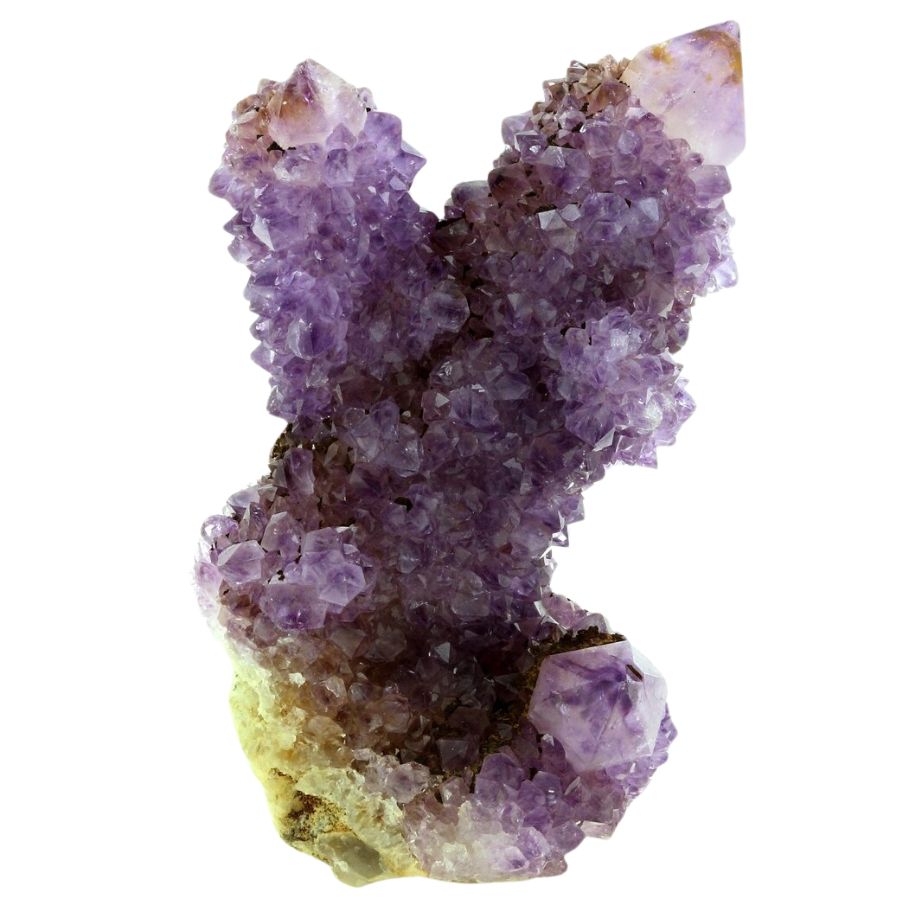
Cactus amethyst is also known as spirit quartz. Its unique structure is enriched with additional minerals, which contribute to its distinctive appearance.
This type of amethyst is characterized by a central quartz crystal covered in smaller crystal growths, giving it a spiky, cactus-like appearance.
The color ranges from pale lilac to deep purple, with the variations largely influenced by the amount of iron and other trace elements within the crystals.
A notable feature of cactus amethyst is the way the smaller crystals radiate outward from the central crystal.
This formation not only creates a stunning visual effect but also makes each piece of cactus amethyst a unique and fascinating specimen.
Regarding the price of amethyst, it can vary significantly based on the size, quality, and depth of color. While smaller, less vibrant pieces are relatively affordable, larger specimens with deep, rich colors can be quite valuable.
Scepter Amethyst
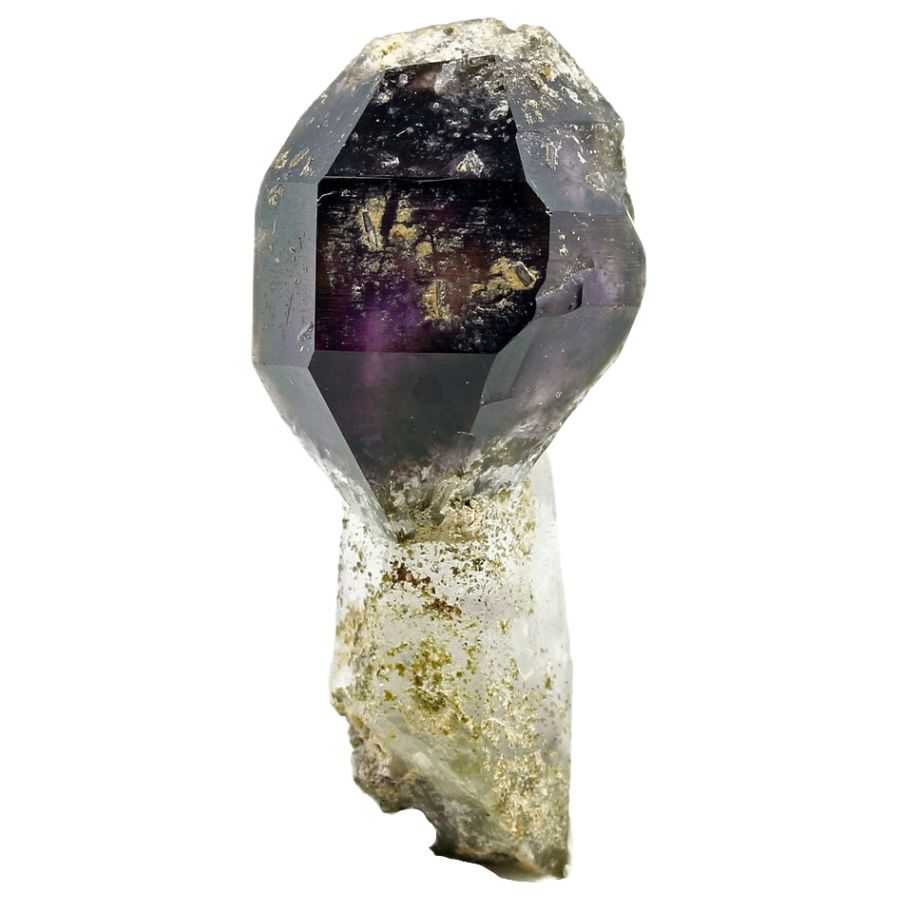
Scepter amethyst gets its name from its distinctive scepter-like formation, where a larger crystal cap sits atop a smaller crystal stem.
The color variations in scepter amethyst are influenced by the amount of iron and other trace elements within the crystal, coupled with the specific conditions under which it formed.
A key feature of scepter amethyst is its symbolic scepter shape, representing a crystal formation process where a second phase of growth occurs on an already-formed crystal base. This creates a striking and regal scepter-like appearance.
Smoky Amethyst
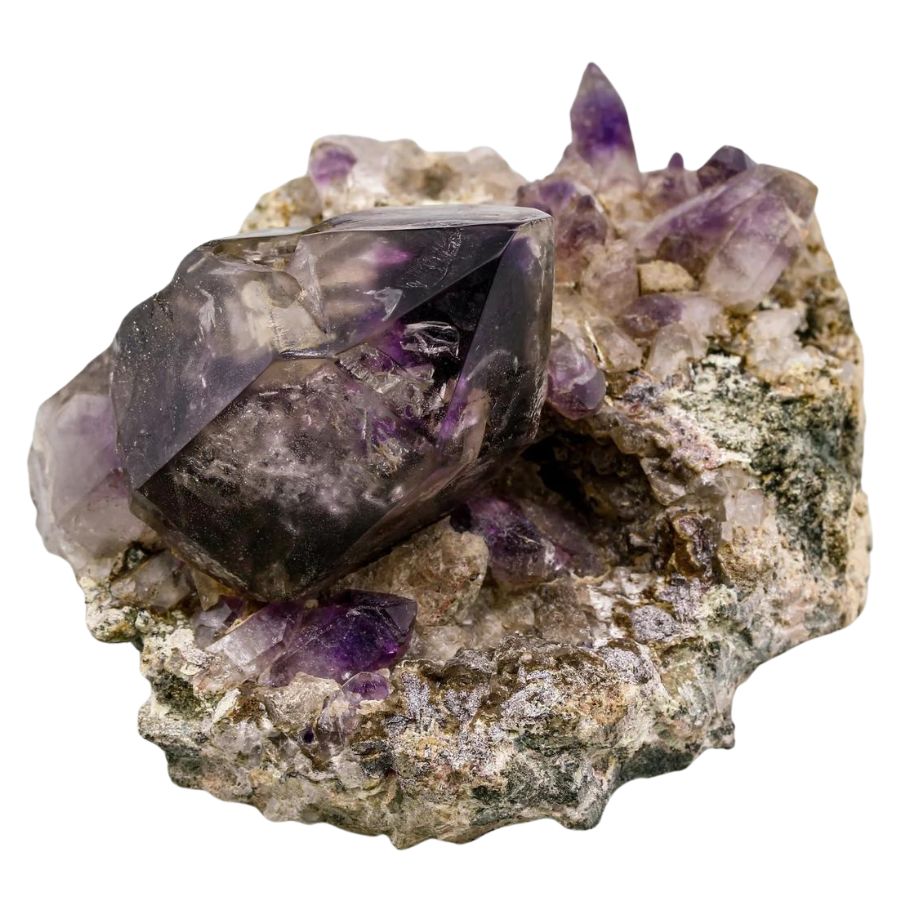
Smoky amethyst is a unique variation among amethyst types that combines features of both smoky quartz and amethyst. The presence of trace elements like iron and aluminum gives it its unique coloration.
This mineral exhibits a blend of smoky brown and purple hues, creating a captivating visual effect. This is due to natural irradiation and the varying amounts of impurities, which influence the depth and intensity of both the smoky and purple colors.
A notable feature of smoky amethyst is its dual-tone appearance, which is not commonly found in other quartz varieties.
- The deep experience and understanding of our team about the area
- Recommendations from local groups and clubs
- How easy it is to get the a particular location
- Safety and potential hazards when collecting
- Weighing private and public locations
- The ability for both experienced and novice amethyst enthusiasts to find great samples
With these factors in mind we’ve been able to put together a fantastic list that just about anyone can use!
The Best Spot To Find Amethyst in Illinois

While there’s a handful of great gem mining sites in Illinois, not all of them have naturally-occurring Amethysts. In fact, we went all over our state to find the sure sites where you can find them.
Since there are limited sites here (there is really only one good spot in Illinois that we know of), we also went across our bordering states to extend our search for these elusive wonders.
Always Confirm Access and Collection Rules!
Before heading out to any of the locations on our list you need to confirm access requirements and collection rules for both public and private locations directly with the location. We haven’t personally verified every location and the access requirements and collection rules often change without notice.
Many of the locations we mention will not allow collecting but are still great places for those who love to find beautiful rocks and minerals in the wild without keeping them. We also can’t guarantee you will find anything in these locations since they are constantly changing.
Always get updated information directly from the source ahead of time to ensure responsible rockhounding. If you want even more current options it’s always a good idea to contact local rock and mineral clubs and groups
Shores of the Mississippi River
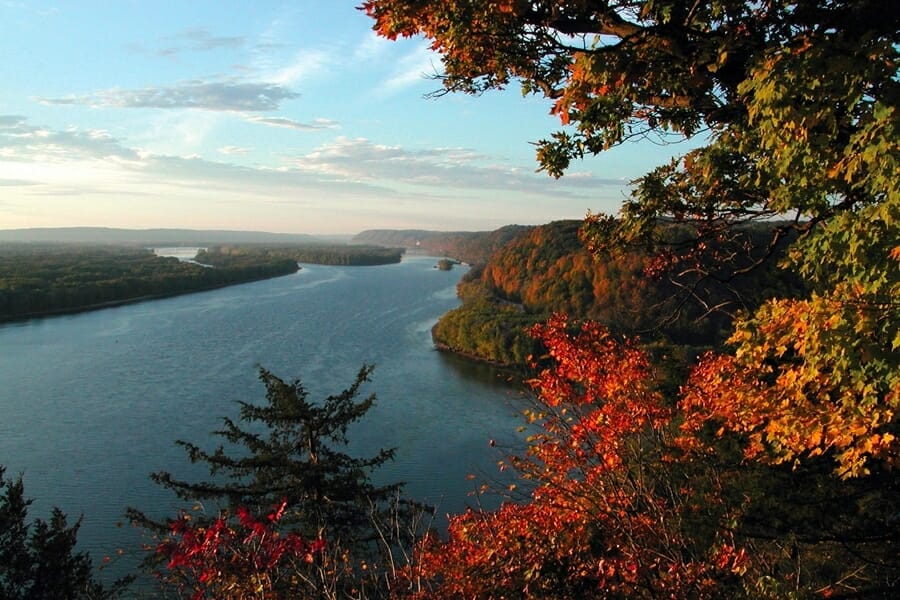
Stretching approximately 550 miles along the western border of our state, the Illinois section of the Mississippi River showcases a combination of lush forests, fertile farmlands, and dramatic bluffs. The river itself serves as a vital waterway for transportation and trade, with bustling ports and marinas dotting its shores.
The terrain along the Mississippi River varies from flat floodplains to rolling hills, providing a rich and diverse ecosystem. It’s known for its scenic beauty, with towering limestone bluffs that offer breathtaking views of the river below. These bluffs not only add to the aesthetic appeal but also provide an ideal geological setting for the formation of various minerals, including Amethyst Geodes.
While finding Amethyst along the river shores can require some exploration and knowledge of the local geology, the accessibility is generally favorable. This area is well-connected to roads and highways, making it relatively easy for you to access and explore the area. But before heading out here, make sure to check out Illinois’ collecting guidelines first.
Where we found amethyst in the Mississippi River
The shores of the Mississippi River especially along the Warsaw formation that surrounds Warsaw, Hamilton, and Nauvoo in western Illinois abounds in Geodes with pale Amethyst crystals.
If you want REAL results finding incredible rocks and minerals you need one of these 👇👇👇
Finding the coolest rocks in isn’t luck, it's knowing what to look for. Thousands of your fellow rock hunters are already carrying Rock Chasing field guides. Maybe it's time you joined the community.
Lightweight, mud-proof, and packed with clear photos, it’s become the go-to tool for anyone interested discovering what’s hidden under our red dirt and what they've already found.
Join them, and make your next rockhounding trip actually pay off.
What makes it different:
- 📍 Find and identify 140 incredible crystals, rocks, gemstones, minerals, and geodes across the USA
- 🚙 Field-tested across America's rivers, ranchlands, mountains, and roadcuts
- 📘 Heavy duty laminated pages resist dust, sweat, and water
- 🧠 Zero fluff — just clear visuals and straight-to-the-point info
- ⭐ Rated 4.8★ by real collectors who actually use it in the field
Williams Creek in Indiana
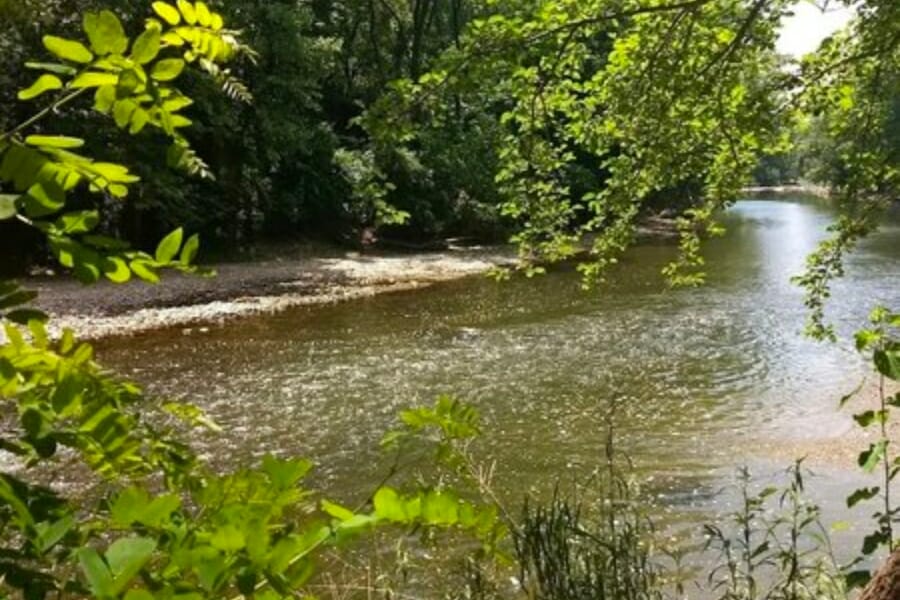
We’ve expanded our search for Amethyst-bearing sites to include locations in our bordering states. That’s how we found Williams Creek, nestled in the beautiful state of Indiana, where you can embark on an amethyst-hunting adventure.
Geographically, Williams Creek flows through a scenic landscape that showcases the charm of the Midwest. The creek meanders through lush forests and serene meadows, creating a picturesque backdrop for your escapades. As you explore here, you’ll encounter a mix of gently rolling hills, rocky outcrops, and sandy riverbanks.
The creek flows through an area rich in geologic formations that are known to host deposits of Amethyst. The underlying geology consists of ancient sedimentary rocks and mineral-rich veins, creating the ideal conditions for its formation. Keep your eyes peeled for pockets and crevices where these purple beauties may be hiding.
Where we found amethyst in Williams Creek
Explore the different nooks and crannies of this place to find Amethyst. Your effort will be well worth it, because this location is a pretty solid spot. That’s also why it’s among our list of Amethyst mining spots that’s worth checking out.
Whitehall in Wisconsin
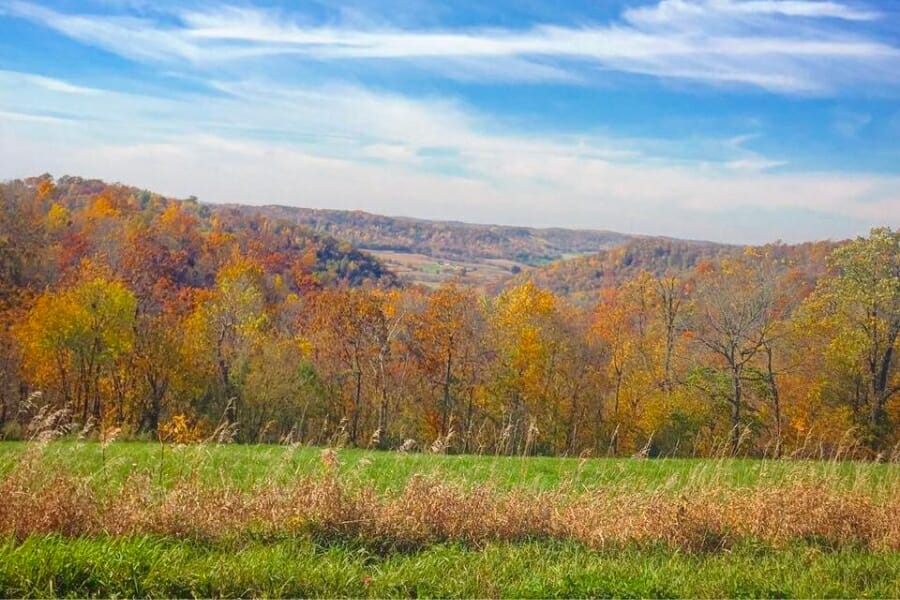
Whitehall, a charming town in the heart of Wisconsin, is a haven for Amethyst seekers! If you’re in Illinois and itching to embark on an exciting Amethyst-hunting adventure, you may want to stretch your search to this delightful destination.
Whitehall is situated in a region blessed with natural beauty. Imagine picturesque rolling hills, lush forests, and scenic countryside. This idyllic backdrop sets the stage for your Amethyst quest, offering not only a thrilling gem-hunting experience but also a feast for the eyes.
Beneath the surface of Whitehall lie ancient rocks and mineral-rich veins, creating the perfect conditions for Amethyst to develop. And if the view is not enough to convince you to go here, you should know that Whitehall is an easily accessible destination by car for gem hunters from Illinois.
Where we found amethyst in Whitehall
Search for Amethyst in the road cuts and stream cuts just north of Whitehall area in Trempealeau County.
Keokuk Geode Beds in Iowa
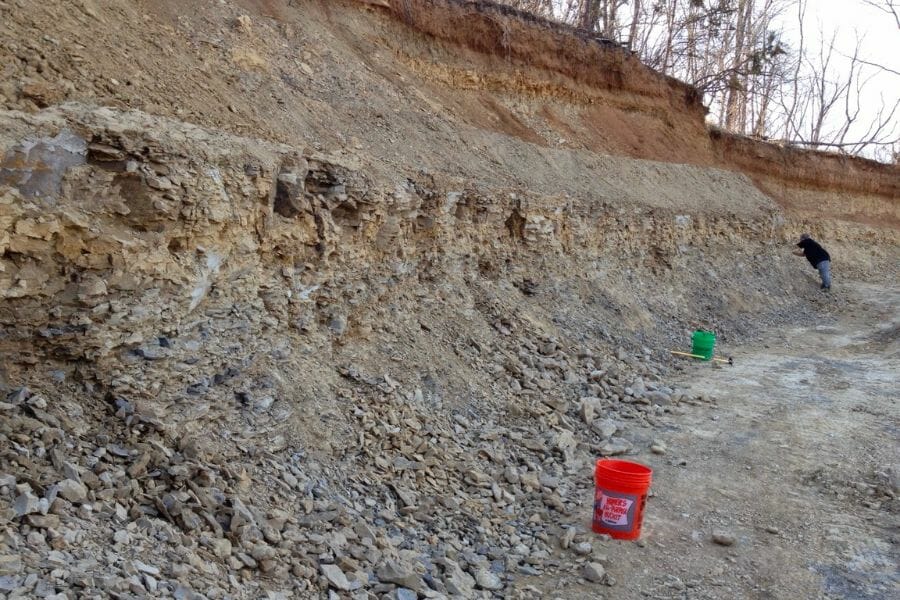
Another great location that’s just a stone’s throw away for Amethyst enthusiast in Illinois is the Keokuk Geode Beds. It’s situated in the scenic state of Iowa, not far from the Illinois border. As you make your way to this treasure trove, you’ll be greeted by rolling hills, meandering rivers, and breathtaking vistas.
Keokuk Geode Beds has a unique geological formation that gives birth to these fascinating hollow rocks filled with sparkling treasures. Over millions of years, volcanic activity and mineral-rich waters combined to create the perfect conditions for geodes to form. These natural wonders contain an array of breathtaking minerals, including beautiful Amethyst crystals.
Getting to the Keokuk Geode Beds is a breeze, making it a convenient destination for eager gem hunters from Illinois. Hop in your car and hit the road, as this gem-hunting hotspot is just a short drive away.
Where we found amethyst in Keokuk Geode Beds
Amethyst Geodes naturally occur in the Warsaw Formation at the Keokuk Geode Beds outcrop that lie around the junction of the Des Moines and Mississippi River.
Huzzah Conservation Area in Missouri

Just a hop, skip, and a jump away from Illinois is the Huzzah Conservation Area in Missouri. If you’re seeking Amethyst treasures and a thrilling outdoor experience, look no further that this site.
Huzzah Conservation Area offers a diverse and picturesque landscape, surrounded by rolling hills, lush forests, and crystal-clear streams. The area boasts of a mix of rugged terrain, rocky outcrops, and serene valleys, creating a haven for gemstone enthusiasts and nature lovers.
This spot is known for its fascinating geological formations, which host Amethyst treasures. As you explore here, keep an eye out for signs of geologic activity, such as exposed rock formations or areas with high mineral content, because this is most probably where you can find them.
Where we found amethyst in Huzzah Conservation Area
You can find sparkling samples of Amethyst on the mine dumps along Highway 8 to Huzzah Conservation Area.
Common Amethyst-Hunting Questions
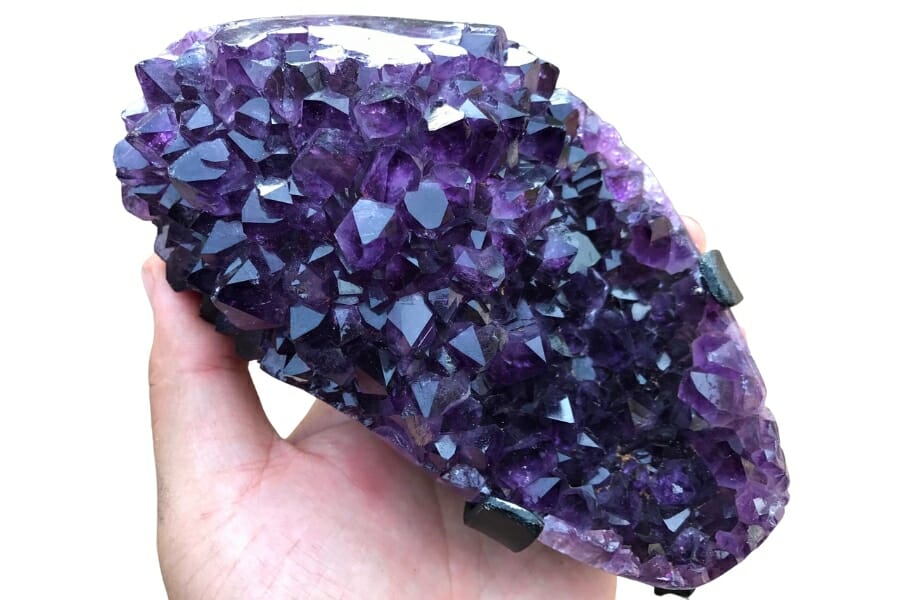
We’ve collected some of the most commonly-asked questions by Amethyst hunters who are interested to explore Illinois, and we’ll answer them for you below:
Where can you find Amethyst Geodes in Illinois?
Lucky for you, Amethyst Geodes naturally occur in the shores of Mississippi River in Western Illinois. You can explore this area, particularly the Warsaw Formation, for Geodes with pale-colored Amethyst crystals.
Is it illegal to collect amethyst in Illinois?
It is legal to collect Amethyst in Illinois for as long as you comply with our state’s local collecting guidelines. Do extra research also on the area that you’re planning to explore, as they may have area-specific rules and regulations for collection.
The Best Places To Buy Amethyst In Illinois
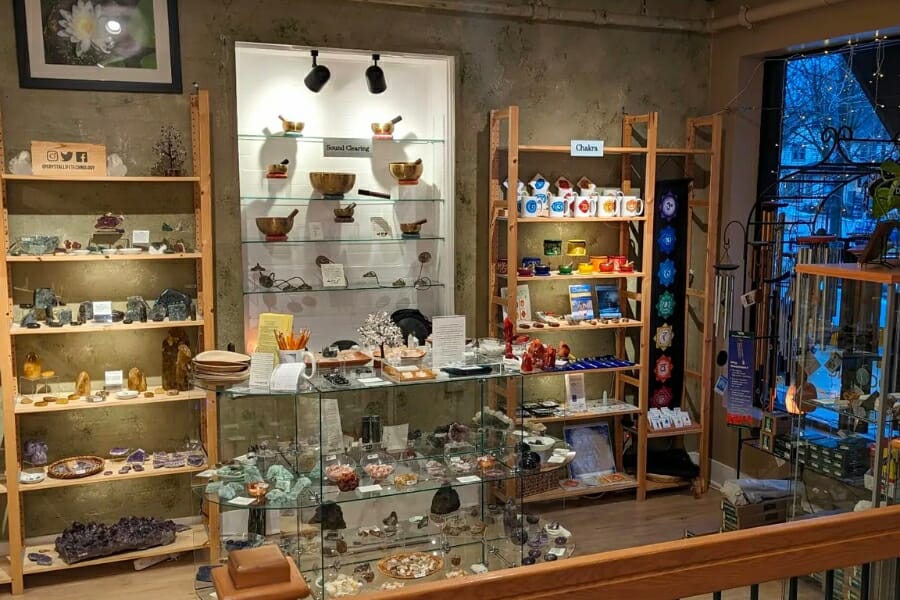
There is no doubt that Amethyst’s beauty is breathtaking, but it can also be elusive at times. If you don’t have much time, energy, or even patience locating these gems in its natural environment, we highly recommend visiting our local gem shops here.
The following gem shops have some of the best selections you can find in our state:
Crystal Earth Rock Shop – 1125 S Main St J, Lombard, IL 60148
Crystal Life Technology, Inc. – 121 S 3rd St, Geneva, IL 60134
Precious Possessions, Ltd. – 28 N Michigan Ave, Chicago, IL 60602
Rock Soul Love – 424 N Main St, Bloomington, IL 61701
The Rock and Soul – 229 S Clark St, North Utica, IL 61373
The Treasure Shop – 314 Franklin St, Geneva, IL 60134
Additional Places To Find Amethyst In Nearby States
Check out the guides we made for the nearby states where you can find amethysts as well:
If you have any recommendations for our list please leave a comment below!



